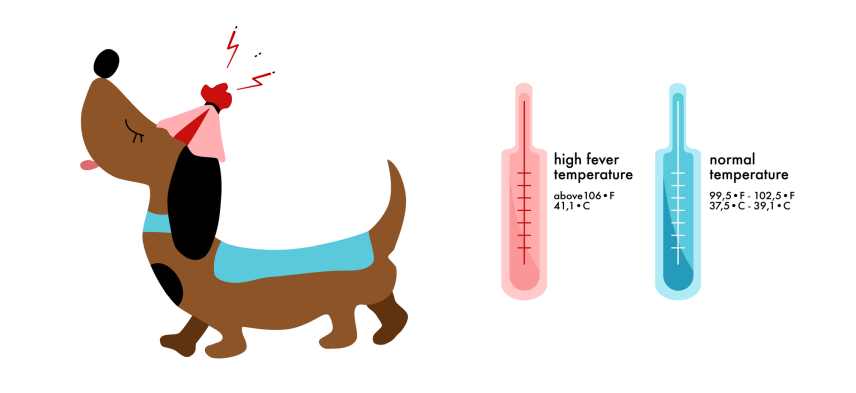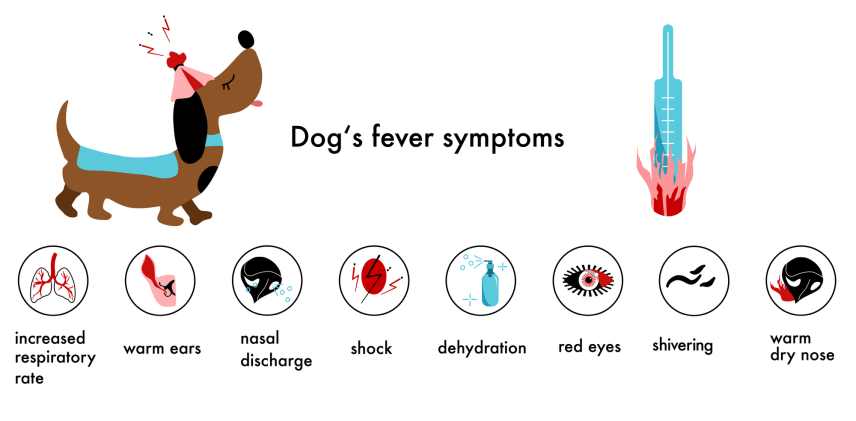
Key Highlights
- Monitoring your dog’s temperature regularly can help in early detection of health issues.
- Understanding the normal temperature range for dogs is crucial for accurate readings.
- Factors like fever or infections can impact your dog’s body temperature.
- Checking your dog’s temperature can reveal underlying health conditions.
- Safely and correctly using a thermometer is essential for accurate results.
- Regular temperature checks and prompt veterinary care can prevent serious health complications.
Introduction
Knowing your dog’s normal temperature is very important for their health. Checking their temperature often can give you helpful information about their well-being. When you keep track of your dog’s body temperature, you can spot problems early and get them to the vet quickly if needed. In this guide, we will look at why checking your dog’s temperature is important, how to measure it correctly, and why every pet owner should understand the need for regular temperature checks.
Understanding Your Dog’s Normal Temperature

A dog’s normal body temperature is between 100.5°F and 102.5°F. However, things like age, breed, and how active your dog is can change their body temperature. If you know what is normal for your dog, you can spot any problems early. Checking their temperature regularly is a good way to see how healthy they are. This helps you get veterinary care quickly if needed. Knowing your dog’s healthy temperature can help you find any health issues in time.
The Range of Healthy Temperatures for Dogs
A dog’s normal body temperature ranges usually falls between 99.5°F and 102.5°F. It is important to check your dog’s temperature regularly to keep them healthy. If the temperature goes above 103.5°F, it is considered a dog fever, and you should see a vet right away.
Knowing the dog’s normal body temperature ranges helps you notice any changes early, which is good for quick action. Regularly checking your dog’s temperature is a simple way to assess their health. This can help in the accurate diagnosis of your pet if there are any issues.
Factors Affecting a Dog’s Body Temperature
Many factors can affect a dog’s body temperature. Things like weather, how much they exercise, and stress can change it. For example, hot weather, intense activity, or feeling worried can raise their temperature. On the other hand, cold places or being sick can lower it. Knowing how these factors work is important for keeping your dog healthy.
Checking their temperature regularly at various times of the day and taking quick action can stop any problems from getting worse. Pay attention to these effects to help your furry friend stay comfortable and healthy.
The Significance of Regular Temperature Checks

Regularly checking your dog’s temperature is very important for their health. It helps you spot any problems early. This way, you can take your dog to the vet if something seems wrong. Keeping track of their temperature can show if they have hidden health issues. This might help stop serious injuries or deadly complications. By checking your dog’s temperature, you get a good indication of how they are doing. Adding this habit to your routine shows you care about your dog’s well-being.
How Temperature Checks Can Reveal Underlying Conditions
If the temperature reading is unusual, it might mean there is an infection, inflammation, or a fever of unknown origin. Keeping an eye on your dog’s healthy temperature consistently can show early signs of possible illnesses and lead to quicker veterinary care. You should look for any strange changes in body temperature because they might mean there are hidden issues.
Regular temperature checks are a smart way to protect your dog’s health and find potential problems before they get worse. It is important to know your dog’s healthy temperature so you can spot any changes that could mean health issues.
Step-by-Step Guide to Safely Check Your Dog’s Temperature
When you need to check your dog’s internal temperature, start by making your pet feel calm. Use a rectal thermometer or an ear thermometer for the best results. Hold your dog gently and put some cool water and petroleum jelly on the tip of the thermometer.
For rectal readings, insert it into the rectum. If you’re using an ear thermometer, place it in the ear canal. Keep the thermometer still for about a minute. The normal body temperature for dogs is between 100.5°F and 102.5°F. If your dog’s temperature is outside this range, or if they look sick, contact a vet. It’s always best to talk to a professional for a correct diagnosis.
Choosing the Right Thermometer
It is important to pick the best way to choose the right thermometer for your dog. Many people like a digital thermometer because it is easy to use and gives accurate results. Make sure it is made for veterinary use.
A rectal thermometer is often the best choice because it gives a true reading of your dog’s body temperature. It’s also wise to keep a separate thermometer just for your dog to ensure hygiene. Look for a thermometer that has a flexible tip and an easy-to-read display.
Always follow the instructions from the manufacturer for the best readings. If you have questions, talk to a veterinarian. Choose a thermometer that is safe, reliable, and fits your pet’s needs.
The Correct Way to Use a Thermometer on Dogs
Gently put a rectal thermometer, that is lubricated with petroleum jelly, into your dog’s rectum about one inch deep. Hold it still for one minute. If you are using an ear thermometer, carefully place the tip at the entrance of the ear canal. Do not insert it too far in. Press the button to get a reading.
Keep in mind, rectal thermometers give the most accurate results. Always clean the thermometer after using it. If you see anything unusual with your dog’s temperature, contact a vet.
Conclusion: How Often Should I Check My Dogs Temperature
Always put your dog’s health first by checking their temperature often. It is important to know your dog’s normal temperature range and what can affect it. By checking their temperature regularly, you can catch health problems early and stop issues from getting worse.
Make sure to use a rectal thermometer the right way.
If you see any unusual readings or symptoms, talk to a vet. Take good care of your furry friend and get veterinary care quickly if you have any concerns. Stay informed and take action to keep your dog happy and healthy.
Frequently Asked Questions
How often should I check my dog’s temperature if they seem healthy?
To keep your dog healthy, check their temperature once a month. Doing this regularly helps you spot health problems early. This makes it easier to act quickly to treat and prevent issues. Keep in mind, taking care of your pet’s health before problems arise is important for their overall well-being.
What signs indicate that I should check my dog’s temperature immediately?
Signs like too much panting, shivering, tiredness, or throwing up might mean you should check your dog’s temperature right away. Keeping an eye on these signs can help find health problems early.
Can I use a human thermometer on my dog?
Using a human thermometer on your dog is not a good idea. Dog thermometers are made just for pets. They give accurate readings and do not hurt your dog. A human thermometer might give wrong readings or even hurt your dog.
What should I do if my dog’s temperature is too high or too low?
- Check your dog’s behavior regularly.
- Give water if your dog is too hot.
- If your dog has a high temperature, see a vet.
- Use a blanket to keep your dog warm.
- Contact a vet right away for low temperatures.
- Keep a close eye on your dog.
How can I make my dog more comfortable during temperature checks?
- Make your dog feel better during temperature checks.
- Keep a calm and quiet place.
- Use lubrication on the thermometer.
- Give treats and praise to your dog.
- If needed, hold your dog gently.
- Speak softly to help them relax.
A Comprehensive Guide: How to Check Your Dogs Temperature

Knowing how to check your dog’s temperature is an important skill for any pet owner, helping you catch signs of illness early. How to Check Your Dog’s Temperature provides a straightforward guide on taking your dog’s temperature safely and accurately. This article also explains what temperature ranges are normal and when to seek veterinary care to ensure your dog’s health.
Continue reading: How to Check Your Dogs Temperature
3 Ways to Check the Temperature of a Dog

Understanding your dog’s normal body temperature can help you recognize potential health issues early. 3 Ways to Check the Temperature of a Dog explains what constitutes a healthy temperature range for dogs and discusses the signs and causes of fever or hypothermia. This article is a valuable resource for pet owners looking to monitor their dog’s health and respond promptly to temperature-related concerns.
Continue reading: 3 Ways to Check the Temperature of a Dog
Common Misconceptions About Pet Insurance

Pet insurance can be a valuable tool for managing unexpected veterinary costs, but there are many misconceptions that can deter pet owners from considering it. This article addresses common myths surrounding pet insurance, from concerns about affordability to questions about coverage limitations. By debunking these myths, it aims to provide a clearer understanding of how pet insurance works and why it may be worth considering for your pet’s health and your peace of mind.
Continue reading: Common Misconceptions About Pet Insurance: Debunking Myths for Smart Pet Owners
